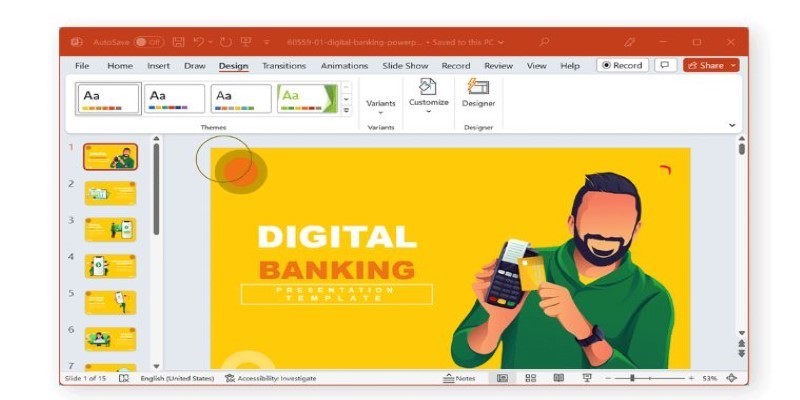Successful app development in today's rapidly evolving digital product landscape requires speed, accuracy, and teamwork. Recognizing these priorities, Bolt.New has introduced a game-changing integration with Figma, designed to drastically simplify the process of turning design files into working applications.
This new capability allows developers and designers to move from static UI designs to fully operational full-stack apps with minimal friction. By leveraging this integration, Bolt.New removes many of the manual steps typically required in translating visual prototypes into production-ready code—helping teams save time, reduce errors, and streamline product iteration cycles.
Bridging the Gap Between Design and Development
The handoff between design and development has historically been a bottleneck in digital product workflows. Designers work with tools like Figma to craft interfaces and experiences. Still, developers often need to rebuild these designs manually using code—a process that is not only time-consuming but also prone to inconsistencies and misinterpretations.
Bolt.New’s Figma integration directly addresses this challenge by creating a seamless pipeline between Figma files and app development. Now, teams can instantly generate code that mirrors the layout, structure, and styling of their Figma designs without starting from scratch.
At its core, this integration serves as a translator—taking clean, design-layered data and producing structured codebases that reflect precisely what the designer envisioned. It’s a significant step toward reducing silos between design and engineering, empowering both sides to work more collaboratively and efficiently.
How Does the Integration Work?

Bolt.New’s Figma integration has been built with simplicity in mind. Users can trigger the integration by modifying a standard Figma file URL—just by inserting Bolt.new before the Figma link, and the platform initiates the design-to-app conversion process. This lightweight, no-setup-required approach means users don’t need to install any plugins or connect complex APIs to begin.
Once the URL is entered, Bolt.New begins parsing the Figma file and converting it into a structured application. The output is a pixel-perfect, full-stack app that maintains design fidelity and functionality. Behind the scenes, the platform handles layout translation, style extraction, and component generation, allowing developers to focus on customizing and scaling the logic of the app rather than building the UI from the ground up.
This process not only accelerates development but also ensures a higher degree of alignment between the final product and the original design specification.
Designed for Modern Product Teams
The integration is particularly valuable for fast-paced teams looking to prototype, iterate, and launch quickly. Whether building internal tools, client-facing platforms, or MVPs, Bolt.New enables product teams to shift from ideation to implementation in a fraction of the time it would traditionally take.
- Designers can now see their work come to life faster without worrying about discrepancies in translation.
- Developers benefit from code that’s already visually aligned with the design, enabling them to jump straight into backend logic, data flows, or integrations.
- Product managers and founders gain faster visibility into working versions of features, helping them validate concepts sooner and guide development decisions with more precision.
This alignment ensures that everyone in the product lifecycle—from design through deployment—is working from a unified vision.
Token-Based Usage Model for Flexibility
Bolt.New’s Figma integration comes with a usage model tailored to both casual users and high-frequency development teams. The service includes three free conversions per month, offering a no-cost way to explore its capabilities. This free tier is especially useful for small teams, freelancers, or early-stage startups evaluating the platform.
For those needing more frequent access, Bolt.New uses a token-based system to scale usage. Each conversion beyond the free tier consumes tokens, with the number required varying depending on the project’s complexity and size. This flexible approach makes the service accessible without locking users into restrictive monthly subscriptions.
By offering scalable access, Bolt.New ensures that a wide range of teams—from solo developers to larger enterprises—can leverage the integration according to their needs and budgets.
Accuracy Meets Efficiency

One of the standout features of the Figma integration is its dedication to pixel-perfect precision. Unlike many automated tools that simplify or approximate design elements, Bolt.New maintains a strict adherence to visual hierarchy, spacing, typography, and component behavior.
Every element in the Figma file—buttons, images, text blocks, containers—is recreated with high accuracy in the final application. This precision reduces the need for post-conversion adjustments and gives developers a high-quality foundation upon which to build. It also helps ensure that the user experience matches the vision crafted initially by the design team.
This level of accuracy not only speeds up deployment but also maintains brand consistency across platforms—a critical factor in today’s competitive market. It ultimately empowers teams to deliver polished, user-ready applications with minimal rework.
End-to-End Development Enablement
While the integration focuses on automating the front-end creation, Bolt.New does not stop there. The output is a full-stack application, allowing developers to start implementing backend logic immediately, using third-party integrations, and using custom features.
Developers are given full access to the code, enabling them to modify, refactor, and extend the application as needed. Whether the goal is to build a customer-facing web portal, an internal dashboard, or a data-driven product, Bolt.New provides a foundational codebase that is both functional and flexible.
It also allows for easy deployment to preferred hosting environments, CI/CD pipelines, or cloud platforms, as the generated code is structured according to modern development best practices. It makes it easier for teams to go from concept to launch without reworking the core architecture.
Conclusion
Bolt.New’s Figma integration is a powerful advancement for anyone involved in the app development lifecycle. By bridging the historically disconnected worlds of design and development, it enables teams to work more cohesively, iterate faster, and produce higher-quality digital experiences.
Through a frictionless, accurate, and scalable approach, this integration empowers product creators at every level to transform ideas into working apps without the usual delays or compromises. Whether for quick prototypes or production-ready builds, Bolt.New is making app development more accessible, efficient, and aligned than ever before.







